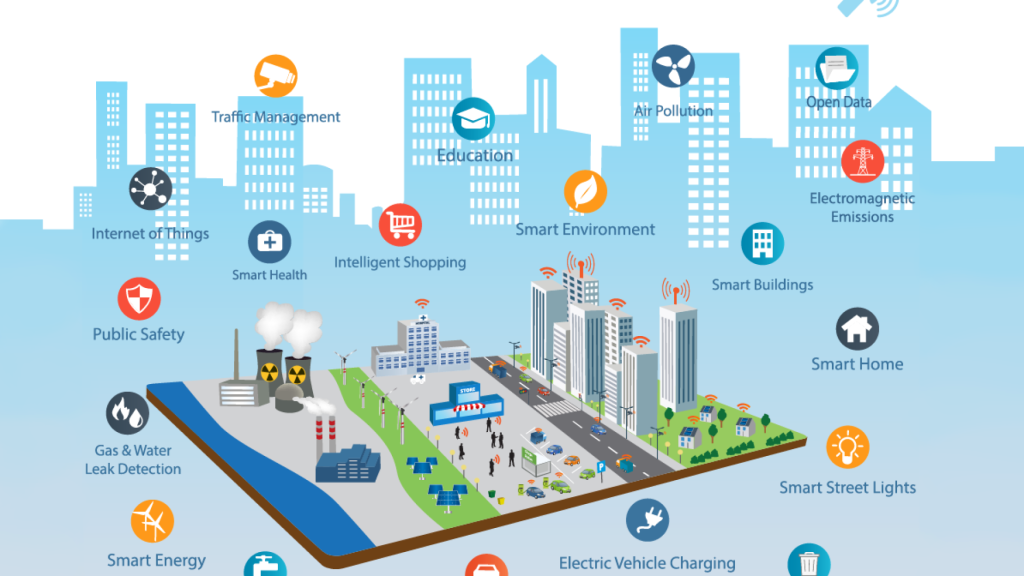A vital element of smart cities strategy is to integrate the latest wireless technology. These innovations greatly raise citizens’ quality of life, improve connectivity, and simplify municipal operations. Another important aspect discussed in this article, is the different types of wireless networks, which serves as a crucial point for cities of the future.
Table of Contents
Understanding Wireless Technology in Smart Cities
A wide range of systems that transfer data without physical connections are included in the category of wireless technology in smart cities. Real-time data exchange, monitoring, and management of urban infrastructure are made possible by these technologies. Wireless networks enable a smooth information flow, enabling effective urban management, from traffic control to public safety and environmental monitoring.
Types of Wireless Network in Smart Cities
Different types of wireless network are used by smart cities to accomplish complete connectivity.
These include:
- Wi-Fi Networks: Wi-Fi networks are almost inescapable, providing the foundation for an endless number of applications from home internet to data storage used for the smart cities backend.
- Cellular Networks: Cellular networks, which are now evolving from the 4G to the 5G technology, allow for faster speeds and reduced latency, enabling them to be suitable for crucial communication tasks like those in Emergency Services and transportation.
- LPWAN (Low-Power Wide-Area Network): LPWAN is applied in the sensor networks to stream environmental data such as air quality, water levels, and other parameters.
- LiFi (Light Fidelity): As a newer technology which uses light to transmit data is capable of achieving higher throughput and greater security, this technology is suitable for densely populated areas where traditional radio frequency networks are prone to congestion and security issues.
LiFi: Enhancing Urban Connectivity
Light Fidelity (LiFi) is unique among smart city technology due to its transformative nature. Lifi, which uses light to deliver fast, secure internet access, excels at navigating the complex, crowded environments present in contemporary cities. This technology is a vital component of the infrastructure of smart cities because it not only handles the massive volume of data traffic in urban areas but also makes sure that communications are safe from outside threats.
The Benefits of Wireless Technology in Urban Management
There are several advantages to using wireless technology in smart cities:
- Enhanced Public Safety: Quick emergency response and crime prevention are made possible by real-time data transmission.
- Helps in GDP growth: Because wireless technology boosts productivity and efficiency across industries, it can contribute to GDP growth.
- Better Traffic Management: Congestion is lessened and efficient traffic flow is facilitated by wireless sensor networks.
- Effective Utility Management: Water, gas, and electricity smart meters and smart grids enhance usage monitoring and cut down on waste.
- Environmental Monitoring: Cities can keep an eye on environmental problems and take quick action thanks to wireless sensors.
Such innovations have the potential to enhance the lives of citizens while enabling efficient running of city services.
Prospects for Tomorrow: Wireless Technologies in Smart Cities
It is expected that wireless technology will be utilized substantially and widely as smart cities become more advanced. More integrations and advancements in the management of urban infrastructure will be fueled by innovations in fields like 5G, LiFi, and the Internet of Things. The development of smart cities will continue to be based heavily on wireless technology, with new uses and solutions emerging to meet the dynamic needs of urban areas.
Conclusion
As the foundation for intelligent urban management and connectivity, wireless technology is essential to the development of smart cities. Cities can become more sustainable, safe, and efficient by implementing a variety of wireless networks, including cutting-edge devices like LiFiMAX. Urban development is about to enter a new era as the potential for smarter, more connected urban environments becomes more tangible as technology advances.

